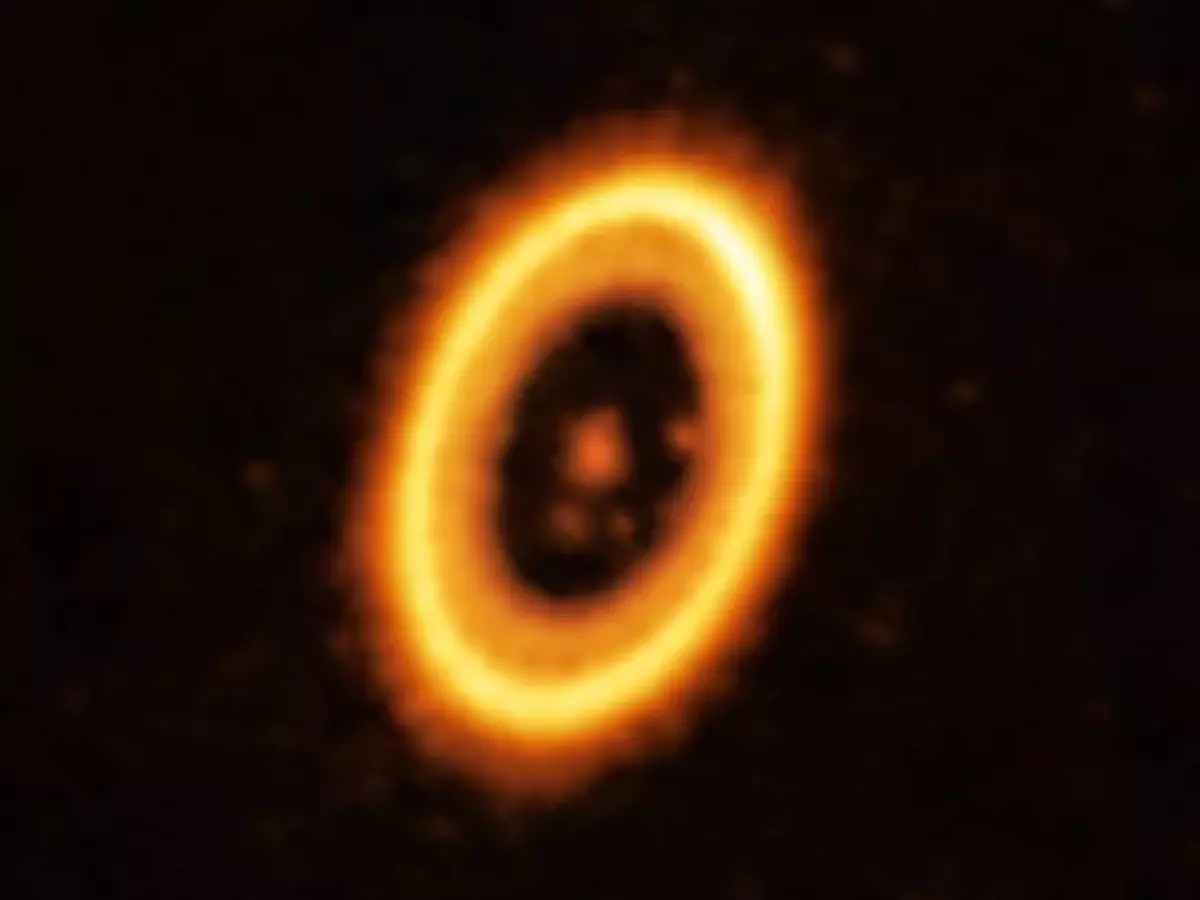Evidence Of Two Planets Sharing The Same Orbit Found For The First Time
Planets that orbit large stars like our Sun usually do so in some distance from each other. But recently, scientists discovered something unusual, noticing two exoplanets that share the same orbit.

Planets that orbit large stars like our Sun usually do so in some distance from each other. But recently, scientists discovered something unusual, noticing two exoplanets that share the same orbit.
If confirmed, this would mark the first time anything like that has been discovered. Astronomers used the ground-based Atacama Large Millimeter/submillimeter Array (ALMA) to study the planetary system that orbits star PDS 70, located 400 light-years away.
 ALMA (ESO/NAOJ/NRAO) /Balsalobre-Ruza et al.
ALMA (ESO/NAOJ/NRAO) /Balsalobre-Ruza et al.
Planets with the same orbit
Two known exoplanets orbit this star, called PDS 70 b and PDS 70 c. Observations of PDS 70 b also showed a cloud of debris in its orbit that could create a sibling planet sharing the same orbit.
"Two decades ago it was predicted in theory that pairs of planets of similar mass may share the same orbit around their star, the so-called Trojan or co-orbital planets. For the first time, we have found evidence in favour of that idea," said lead author Olga Balsalobre-Ruza of the Centre for Astrobiology in Madrid in a statement.
There is evidence of small bodies sharing the same orbit as planets in our solar system. Some asteroids also share their orbit with Earth, but this is more common with Jupiter Trojan asteroids.
 Unsplash
Unsplash
Also read: Planets Form In Surprising 'Sandwiched' Way, Shedding Light On Life's Origins: Study
¡°Exotrojans [Trojan planets outside the Solar System] have so far been like unicorns: they are allowed to exist by theory but no one has ever detected them,¡± said co-author Jorge Lillo-Box, also of the Centre for Astrobiology.
The cloud of debris found in the PDS 70 system has twice the mass of our Moon, so it might becoming a planet of its own. It's also possible that there already exists a planet within the dust.
 Unsplash
Unsplash
Also read: Breathtaking Close-Ups Of Mercury Show Solar System's Innermost Planet In Detail
In 2026, researchers will use ALMA again to observe the system and how the planet and its cloud are moving in the orbit. Their research was published in the journal Astronomy & Astrophysics.
What do you think about this exciting study? Let us know in the comments below. For more in the world of technology and science, keep reading Indiatimes.com.
